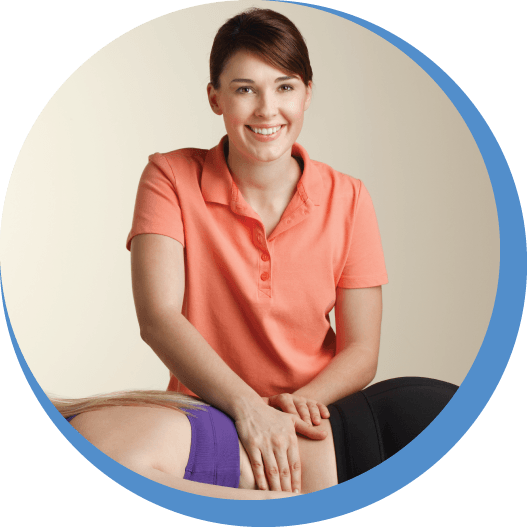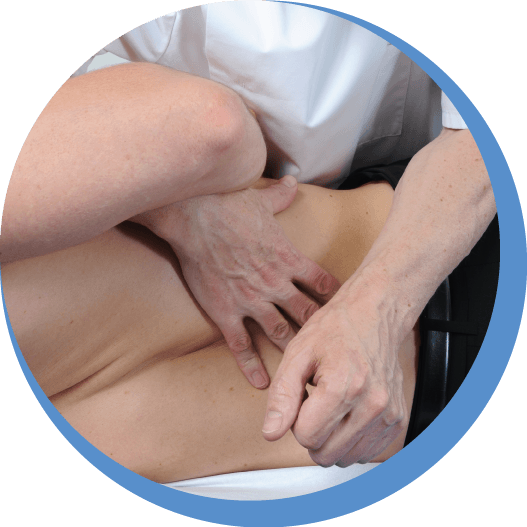Lower Back Pain
Symptoms of Lower Back Pain
- Sharp, burning pain that moves from the low back to the backs of the thighs, sometimes it can radiate into the lower legs or feet; it can include numbness or tingling (sciatica)
- Pain that is achy or dull around the lower back
- Muscle spasms and tightness in the low back, buttock, and hips
- Pain that worsens after continued sitting or standing
- Difficulty standing up straight, walking, or going from standing to sitting
Back pain is a common problem that affects most people at some point in their life and responds very well to osteopathy and acupuncture. It may be caused by bad posture while sitting or standing, bending awkwardly, or lifting incorrectly. It’s not generally caused by a serious condition.
Causes of Lower Back Pain
- Disc Herniation/ Slipped Disc– A slipped disc occurs when a disc in the spine ruptures permitting the gel inside the disc to leak out and aggravates a nerve, often the sciatic nerve causing sciatica. It can cause symptoms of pain to travel down to a leg together with soreness in the lower back and muscles feeling weak and tight.
- Sciatica– Sciatica is the name given to any sort of pain that is caused by irritation or compression of the sciatic nerve. Pain can travel down the back of your pelvis, through your buttocks, and all the way down both legs, ending at your feet.
- Facet Irritation– Facet Joint Syndrome is a problem with movement of the facet joints of the spine. If one of the joints becomes stiff or too mobile, then inflammation and pain is frequently the outcome. Pain can be aggravated by side bending or extending backwards where the facets become compressed and irritated causing pain in the lower back.
- Lower back Strain-Straining the muscles and ligaments that hold your spinal column in place can cause low back pain.
- Spondylolisthesis– Spondylolisthesis is a painful condition affecting the back caused by a vertebra from the lower spine slipping out of place. It can be due to a fracture in the vertebra, osteoarthritis and a birth defect causing lower back pain, muscle tightness and stiffness especially in the hamstrings, pain in the buttocks and thighs, pain radiating down the legs and soreness around the slipped vertebra.
- Sacro-illiac joint– The sacroiliac joint is prone to wear and inflammation causing pain. There are several reasons it could happen, due to an injury in sports, a fall, activity that gives the area a regular pounding, like jogging. It can also be due to chronic lower back pain. Sacro-illiac pain can radiate to the buttocks.
- Spinal Stenosis– Spinal stenosis the narrowing of spaces in the spine which causes pressure on the spinal cord and nerves. Most cases of spinal stenosis occur in the lower back were the narrowing of the spine associated with stenosis compresses the nerve root, which can cause pain along the back of the leg as well as the lower back.
- Piriformis Syndrome– Piriformis syndrome is a neuromuscular disorder caused by the compression or irritation of the sciatic nerve by the piriformis muscle. It results in pain in the buttocks and the leg.
- Upper Back Pain– Upper and middle back pain, which can occur anywhere from the base of your neck to the bottom of your rib cage, has become much more common as more of us have sedentary occupations and lifestyles. It results in muscle tightness and stiff joints.

Back Pain Treatment Options:
- Counterstrain– The osteopath identifies an exact position of extreme lower back pain for the patient, slowly positions the patient to a position that provides extreme comfort and then slowly returns the patient to a more neutral position.
- High velocity thrusts (HVT)– the osteopath applies a high-velocity thrust to the joint to reduce any restricted movement with the goal of reducing pressure on the joints and providing pain relief.
- Articulation– involving gentle repetitive movement of a joint to try and increase the range of movement.
- Massage– The osteopath may perform different massages to stimulate the muscles and reduce muscle spasm.
- Myofascial Therapy– The osteopath may use this soft tissue therapy to release muscular shortness and tightness.
- Muscle Energy– The osteopath applies a counter-force to the muscles while they are being used in a precise position and direction.
- Soft Tissue Mobilisation– The osteopath applies rhythmic stretching, deep pressure or traction techniques to involve the muscle area around the spine to reduce pain.

Acupuncture:
- Needles are usually placed in the lower back muscles and pelvis and hip muscles for pain relief. It’s thought the effects come from stimulating the central nervous system. This may trigger the release of chemicals into the muscles, spinal cord, and brain. These chemicals reduce pain and loosen tight muscles around the lower back, gluteal muscles and legs.
Exercises prescribed by the osteopath:
- Knee hugs
- Lower back prayer stretch
- Piriformis stretch
- Gluteus stretch
- Quadratus lumborum stretch
- Core muscle strengthening

Osteopathic Treatments are covered by Private Health Insurance






